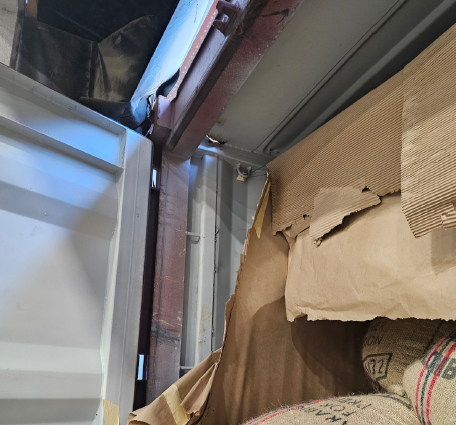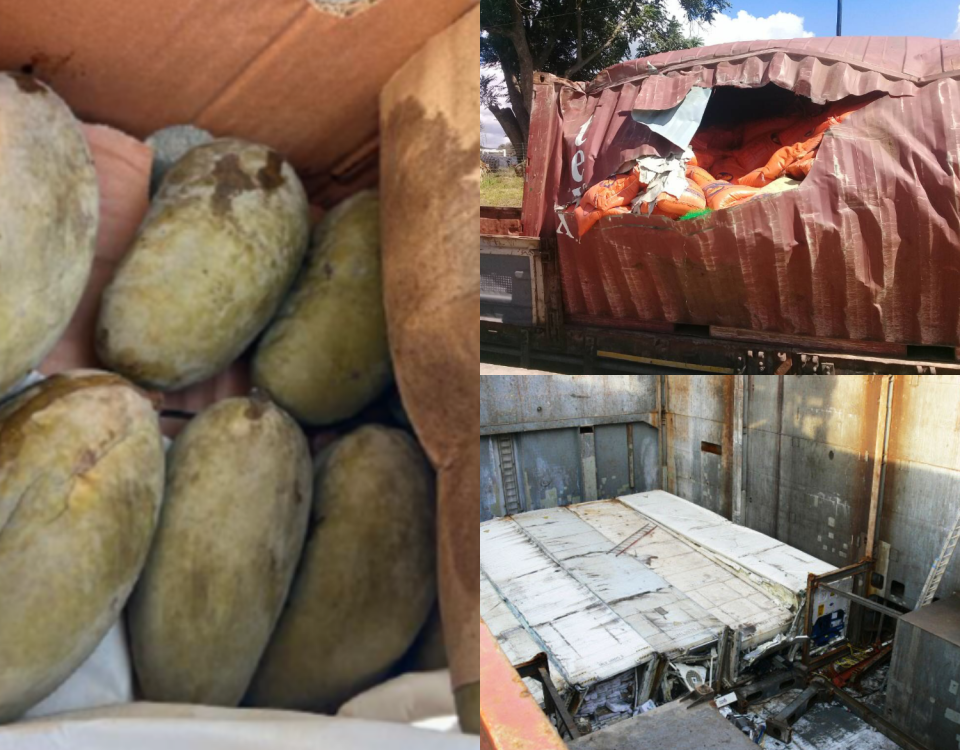A Step-by-Step Claims Process Guideline

Accelerate your Claims Recovery in 4 Steps
December 1, 2023
Top 5 Fruit Exports in 2023
December 15, 2023Nobody wants to deal with cargo claims, especially carriers transporting goods from point A to B. The confusion surrounding necessary documents for claims recovery adds to the challenge. This article provides straightforward guidelines for effective claims handling, making the submission process efficient and uncomplicated.
1. Understanding the Preliminary Notice of Claim
The Hague and Hague/Visby Rules art. 3(6), states:
Unless notice of loss or damage and the general nature of such loss or damage be given in writing to the carrier or his agent at the port of
discharge before or at the time of the removal of the goods into the custody of the person entitled to delivery thereof under the contract of
carriage, or, if the loss or damage be not apparent, within three days, such removal shall be prima facie evidence of the delivery by the carrier of the goods as described in the bill of lading.
It emphasizes the importance of providing written notice of loss or damage to the carrier within a specific timeframe. Since identifying cargo damage within three days is often impractical, shippers now commonly notify shipping lines before cargo arrival or within 3 days after discharge. This proactive approach legally shifts the burden of proof to the shipping line and acts as both a protest and a timely survey invitation.
Feel free to use the below notification to the shipping line template for your shipments. Just by doing this, a receiver increases their chances to receive favorable compensation substantially in case cargo appears to be damaged or lost.
LETTER OF PROTEST
NOTIFICATION OF SURVEY
Date :
BL number(s) Container reference number(s) Load port Seal number upon loading Port of discharge /Final
DestinationDear Sirs,
We are contacting you as cargo receivers with regards to the above referred shipment. As a result of improper transit conditions and do hereby hold shipping line liable for damages and subsequent loss incurred.
In view of the above, we, as cargo receivers and without prejudice to the rights and recovery of interests involved, hereby hold you fully liable for all the damages and/or losses and financial consequences that may result from such damage.
Your failure to acknowledge and/or to confirm and/or to contest the above claim protest will be considered as consent and acceptation from your part.
In addition, in order to investigate the exact circumstances, nature, extent and cause of the reported damage to the above-mentioned shipment, we hereby invite you to attend the joint survey which will be held at the following address:
Address Line 1
Address Line 2
Address Line 3Please consider this letter as a legal protest in due form.
Yours faithfully
2. Taking Delivery of the Cargo
Upon receiving the cargo, conduct thorough checks:
– Inspect the container exterior.
– Verify the integrity of original container seals.
– For reefer containers, check temperature and ventilation settings.
3. Notification and Survey
Notify your insurance underwriter for significant losses, ensuring you are legally entitled to claim as the cargo receiver. In cases of extensive damage or when expert knowledge is needed (e.g., pharmaceuticals or foodstuff), invite a surveyor. Document the damage with a smartphone, taking pictures of the container, its condition, and the cargo stuffing.
Action Step 1. To collect proper photographic evidence you or your team need only a smartphone these days.
Action Step 2. Take pictures of container: make sure that the container number is clearly visible on the door and side panel. Then take pictures evidencing that container was damaged (holed, bent, dropped, corner post damages, etc), poor condition (heavy rust, dents, old door gaskets, etc) or was submerged in water (visible water lines on a side panel, etc). Pictures should be taken from outside and inside the container.
Action Step 3. The next picture has to show how cargo was stuffed inside the container (you present evidence, that shipper/exporter fulfilled the obligation to pack and stuff cargo properly at the time of loading).
Action Step 4. Try to show the extent of damage when taking the picture. Was it only 1 bag of rice soaked in the water or half of the container?
Action Step 5. Take all the pictures before you return the empty containers to the container yard. If possible, put the time stamp on each picture and send it immediately to the carrier together with the claim!
4. Necessary Documents
Submit essential documents based on international conventions, including a copy of the Bill of Lading (BL), packing list, commercial invoice, and pictures of damaged cargo and containers. Clarify your legal right to claim, especially if you are a freight forwarder or third-party service provider.
5. Not-so-vital Documents
Be cautious about unnecessary document requests from shipping lines. Gate-out documents are often collected by carriers and may not be relevant to the investigation unless they prove the container was damaged during discharge.
6. Time Limitations
Be aware of time limitations specified in the BL terms. Initiate an extension if needed, as the countdown starts from the day of delivery at the receiver’s warehouse.
Handling cargo claims properly is crucial to avoid expensive and time-consuming complications. Stay informed about the claims process to efficiently resolve matters and prevent unnecessary losses. Share your experiences in submitting cargo claims for compensation to shipping lines; we’d love to hear from you.
The steps shipping line will take afterwards include:
- Acknowledge receipt of your claim notification and provide a reference number for further correspondence.
- Engage a surveyor if necessary; if the damage is below $15,000 most of the time shipping lines do not appoint Surveyor.
- Initiate an investigation of the cause of damage.
- Awaiting your sufficient supported and quantified claim.
The steps you should be taking include:
- Follow up on your claim weekly.
- 85% of the claims submitted to shipping lines become time-barred and shippers get 0 compensation.
- Make sure your cargo claim does not fall into this category.
Improper handling of cargo claims can be very expensive, time-consuming, and frustrating and should be avoided if possible. The more knowledgeable you are about the ins and outs of the claims process, the better equipped you will be to resolve the matter without entering litigation or absorbing losses in full.
Recoupex is a hub of transport lawyers – experts in cargo claims. We assess your case quickly. We have successfully recovered claims from Maersk, Sealand, Hapag-Lloyd, Mediterranean Shipping Company – MSC, CMA CGM, and other carriers.



